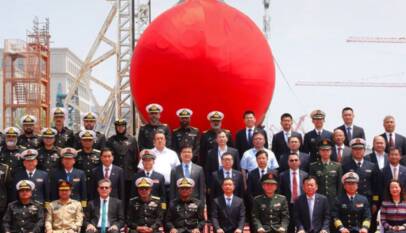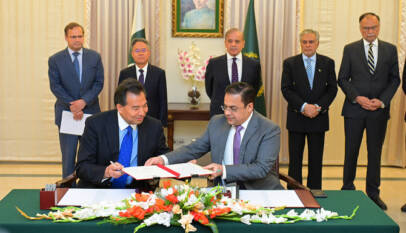CPEC projects bring an era of development in Pakistan
Ms. Arooj Saghir, a researcher at Islamabad Policy Research Institute writes that Pakistan has the chance to connect with the economies of South, East, and Central Asia through CPEC. He adds that the workforce in Pakistan would be trained through joint ventures with Chinese businesses. Pakistani businesspeople will be exposed to the international market thanks to Chinese products in local markets. $25 billion has been invested by China on CPEC projects in Pakistan. In her article, Ms. Saghir highlights that exports from Pakistan to China totaled $251.30 million, an 8% increase from the prior year. China has extended $2 billion SAFE deposits to Pakistan. CPEC has increased job opportunities for the locals. She concludes that So far, 75,000 jobs have been generated in 22 projects. An amount of $1.40 billion advance payment is also under consideration for the upcoming CPEC projects.
With geoeconomics precedence in world politics, the importance of seaports and corridors has been enhanced multifold. In the evolving geopolitical milieu, the significance of CPEC is in the regional context. The corridor will connect East Asia with South Asia. CPEC is an opportunity for Pakistan to link with the economies of South, East and Central Asia. The joint ventures with Chinese companies will train the Pakistani workforce. With Chinese goods in local markets, Pakistani entrepreneurs will be introduced to the foreign market. This industrial competition will improve the quality of products and also expand the local industry to outside markets.
Within the framework of CPEC, infrastructure development projects are being built and power plants to address energy shortages are being constructed; Hubco power plant is one such example. Solar as well as renewable energy generation plants are also being set up. With enhanced energy flows and adequate infrastructure, industrialisation will progress. The industrial collaboration, in particular, the Pakistani workforce interaction with entrepreneurs of diverse backgrounds will help develop the technical expertise needed for the successful execution of CPEC. The corridor’s passing through Balochistan will benefit the province. In the past, the province’s resources were not exploited for the betterment of the locals so there exists a sense of deprivation. To win over the confidence of the locals, the policy should be empowerment at grassroots level. The development of the Reko Diq mine in Balochistan (by the Canadian company, Barrick Gold) is likely to generate jobs for the locals.
CPEC has generated a new frame of cooperation based on economic connectivity. Since 2014, China has invested $25 billion in CPEC projects in Pakistan. In Balochistan alone, a $10 million Chinese grant was allocated to build the Pakistan-China Technical and Vocational Institute and $4 million for the Gwadar Smart Port City Master Plan. China has also extended $2 billion SAFE deposits to Pakistan. An amount of $1.40 billion advance payment is also under consideration for the upcoming CPEC projects.
Meanwhile, Pakistan’s exports to China stood at $251.30 million, an 8 per cent increase from the previous year. In view of the statistics, China’s debt threat seems imaginary and created on purpose. In an interview with Global Times, Prime Minister Shahbaz Sharif said “this threat is constructed by those who see partnerships from a zero-sum perspective. They surely want to see Pakistan deprived and not able to explore its economic potential.”
CPEC has increased job opportunities for the locals. So far, 75,000 jobs have been generated in 22 projects. The purpose of the corridor is to draw economic benefits for the good of the whole region. CPEC is a win-win cooperation, but just as the moon has scars reflecting the recent tectonic activity, the few lows that came with CPEC reflect Pakistan’s economic transformation period.
Fortunately, Pakistan has covered the distance from ‘CPEC will do’ to ‘CPEC has done’. There is a realisation about the challenges CPEC might face in the wake of regional competitive tendencies. To minimise the opposing forces, a realistic constructive approach needs to be adopted with a focus on economic development, technological expertise and cooperation with China. On the regional front, peace in Afghanistan is essential for CPEC’s projection into Central Asia. In this regard, institution building under Shanghai Cooperation Organization (SCO) and Central Asia Regional Economic Cooperation (CAREC) to strengthen communication linkages among the regional countries will be required.
CPEC and Kazakhstan’s vital role in regional trade
The Republic of Kazakhstan has opened doors for the expansion of trade with Pakistan that …













